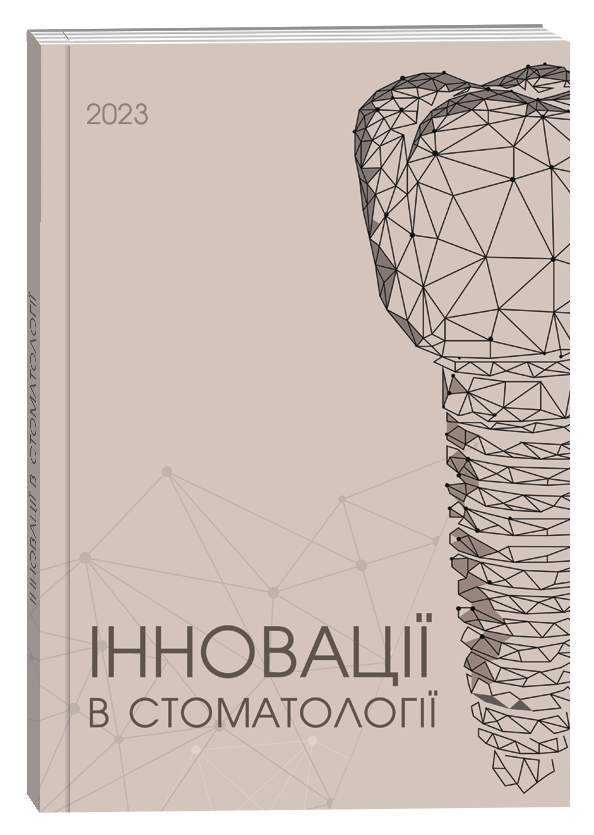ASSESSMENT OF PESTICIDE-INDUCED CHANGES IN INFLAMMATORY MARKERS AND ANTIOXIDANT DEFENCE IN THE ORAL MUCOSA OF RATS USING A THERAPEUTIC AND PROPHYLACTIC COMPLEX
DOI:
https://doi.org/10.35220/2523-420X/2025.1.14Keywords:
pesticide load, oral mucosa, rats, experiment, biochemical markersAbstract
Pesticide exposure resulting from the chronic intake of the synthetic pyrethroid α-cypermethrin triggers oxidative stress and sustains inflammatory reactions in the oral mucosa, thereby potentiating the cariogenic impact of a sugar-rich diet. The coexistence of these factors aggravates local biochemical disturbances, fostering an imbalance between the intensity of lipid peroxidation and the activity of antioxidant enzymes. The purpose of the study was to evaluate the effect of the developed therapeutic and prophylactic complex on inflammation and antioxidant defence in the oral mucosa of rats under conditions of prolonged pesticide exposure and carcinogenic diet.Materials and methods. The experiment involved 40 one-month-old Wistar rats, which were divided into five groups: an intact group; a group receiving a cariogenic diet; a group administered α-cypermethrin orally at a dose of 10 mg/kg; a group subjected to both a cariogenic diet and α-cypermethrin; and a group receiving a cariogenic diet, α-cypermethrin, and the therapeutic-prophylactic complex. The total duration of the experiment was 2 months.Indicators of inflammation and antioxidant defence were determined in the oral mucosa by catalase activity.Research results. The joint action of α-cypermethrin and the cariogenic diet produced the most pronounced biochemical alterations: MDA increased by 57.3 % and catalase activity decreased by 34.3 % versus intact controls, while elastase and acid phosphatase activities rose by 29.3 % and 66.7 %, respectively. Administration of the therapeutic-prophylactic complex lowered MDA by 28.9 %, restored catalase activity to control levels and normalised both inflammatory markers. Conclusions.The developed therapeutic-prophylactic complex markedly attenuates the oxidative and inflammatory shifts in the oral mucosa induced by concurrent α-cypermethrin exposure and a cariogenic diet, highlighting its potential for preventing pesticide-associated cariogenic damage to oral tissues.
References
Afolabi O. K., Aderibigbe F. A., Folarin D. T., Arinola A., Wusu A. D. Oxidative stress and inflammation following sub-lethal oral exposure of cypermethrin in rats: mitigating potential of epicatechin. Heliyon. 2019. № 5(8). Р. e02274. doi: 10.1016/j.heliyon.2019.e02274
Ahamad A., Kumar J. Pyrethroid Pesticides: An Overview on Classification, Toxicological Assessment and Monitoring. J. Hazard. Mater. Adv. 2023. № 10. Р. 100284. doi: 10.1016/j.hazadv.2023.100284
Yue S., Yuan Q., Shen Q., Xu Y., Wang P., Si M., Zhao M. Multiomics implicate gut microbiota in low cypermethrin (CP) exposure induced multiorgan toxicological effects in pubertal male rats. J Hazard Mater. 2023. № 458. Р. 131721. doi: 10.1016/j.jhazmat.2023.131721
European convention for the protection of vertebrale animals used for experimental and other scientific purposes. – Strasburg.Council of Europe, 1986;123:51.
Наказ України «Про затвердження Порядку проведення науковими установами дослідів, експеримен- тів на тваринах» // Міністерство освіти і науки України. 2012. № 249.
Експериментальні методи дослідження стимуляторів остеогенезу : методичні рекомендації / А. П. Левицький та ін. Київ : ГФЦ, 2005. 50 с.
Рогач І. М., Керецман А. О., Сіткар А. Д. Правильно вибраний метод статистичного аналізу – шлях до якісної інтерпретації даних медичних досліджень. Науковий вісник Ужгородського університету. 2017. Вип. 2. С. 124–28.








